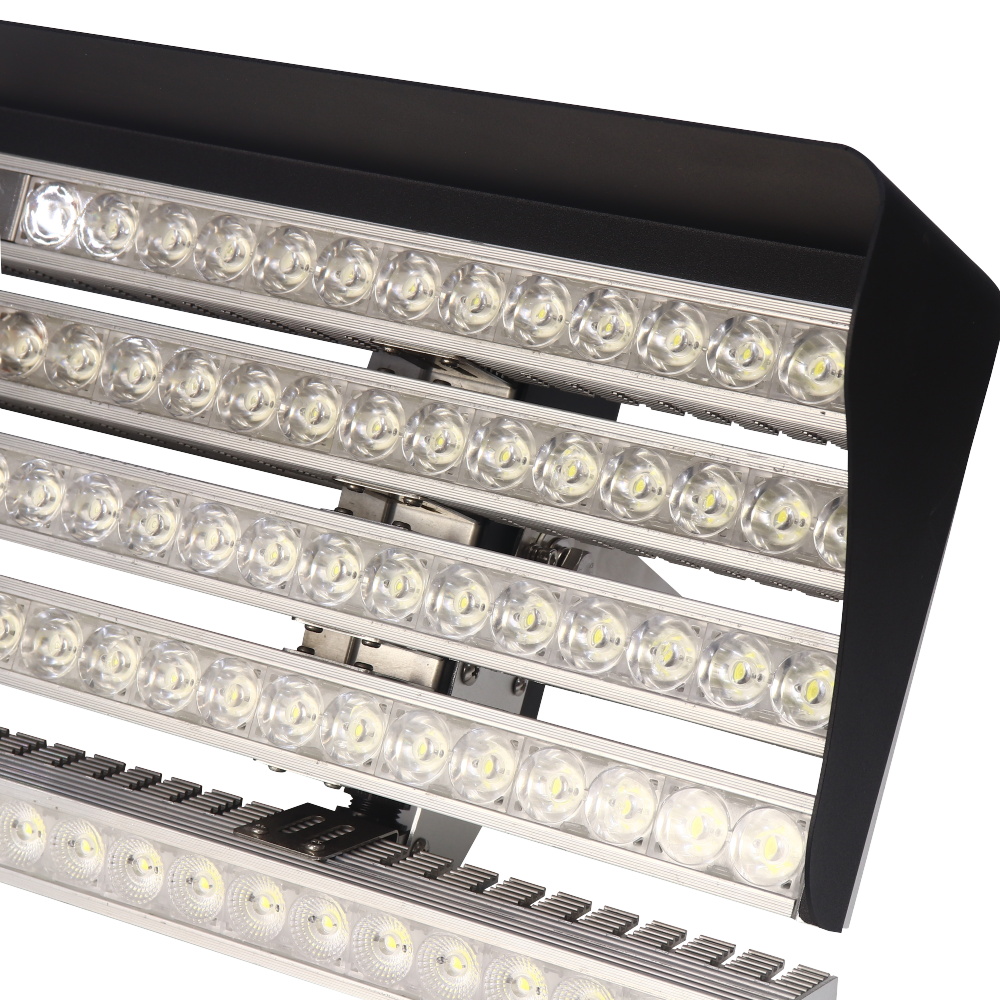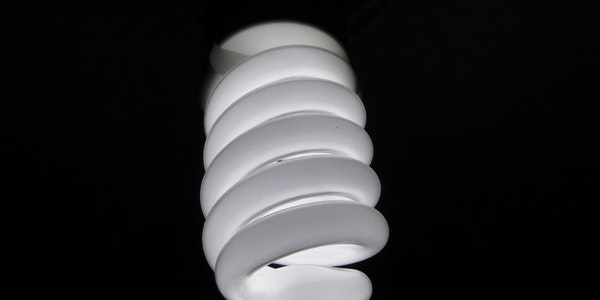What is Flicker in LED Lights
Flicker is a kind of light instability that occurs due to frequency. Light source flicker phenomenon means that the light emitted by the light source changes rapidly and repeatedly over time, making the light source beating and unstable. Studies have shown that light source flickering is closely related to neurological diseases such as migraine, headache, autism, visual fatigue and discomfort. In severe cases, it can cause illusions in the human eye and cause accidents.
What Harm Does Flicker Cause
- May cause brain cell damage
Some researchers say that by observing the EEG, it is found that even if the flicker light in the environment is too fast to be noticeable, the retina of the organism can still distinguish and respond to light with a frequency of 100-160 Hz, or even up to 200 Hz. In animal experiments represented by cats, 100-120Hz light has caused burns on brain cells. The burned cells belong to the tissue of the lateral geniculate body, which controls the eyeball.
- May affect reading and vision
Studies have shown that the brightness flicker of fluorescent lights and CRT display screens can affect the eye movement trajectory of people when reading text. In addition, some health examination reports have also found that visual impairment is caused by fluorescent light flicker.
- May induce migraine
Experiments have found that fluorescent light flickers with a frequency of 100 Hz may cause the incidence of headaches in office workers to double. Of course, this effect is usually considered to be a special case and only occurs in special populations.
- Reduce work efficiency and cause workplace injuries
In light industry, food, printing, electronics, textiles and other industries, straight tube fluorescent lamps are commonly used in lighting fields such as assembly lines. Visual fatigue and migraine caused by flicker light will cause positioning difficulties and low production efficiency; in machinery In the industry, such as crane operators, visual fatigue caused by flicker flicker can cause positioning difficulties, operational errors, and even cause accidents; when the speed of the moving object is multiple of the light source flicker frequency, the motion state of the moving object will be generated. The erroneous vision that is periodically repeated in three states: stationary, inverted, and slow in motion, is likely to cause industrial accidents.
- Photosensitive epilepsy or flashing light-induced epilepsy
Existing research data and industry experts point out that photosensitive epilepsy does exist. Bittencourt and Fisher et al. proposed the epilepsy theory of photosensitive epilepsy in 2004 and 2005. Bittencourt pointed out that the incidence of photosensitive epilepsy in the entire population is very low, with an annual incidence of about 0.001%, and an incidence of about 0.006% in adolescents. And the probability of suffering from this disease in epilepsy patients is as high as 10%.
Fisher measured the unusual brain waves of the human body to light stimulation and found that the incidence of photosensitive epilepsy in people aged 5 to 24 is about 0.01%-0.025%. When epilepsy patients are stimulated by a flashing light source, the incidence is 2% to 14%. The chance of inducing rapid epilepsy symptoms. The Epilepsy Work Foundation of the United States pointed out that the main factors affecting the symptoms of photosensitive epilepsy include flicker frequency, light intensity, modulation depth, spectral composition, and some visual nervous system related factors.
- Persistence of vision caused by flicker
Bullough et al. used a series of waveforms and frequencies to study the flicker effect of solid-state light sources, and found that the modulation depth, frequency, duty cycle and waveform of the drive have an impact on the visibility of the flicker effect.
At the same time, industry experts also agree that the main hazard of the flicker effect is that this visual artifact will cause a series of problems. SafetyatWork mentioned that although some lights that cannot be recognized by the human eye flicker, they will make the field of view rotate rapidly. The machine appears to be visually slow or stationary, which is very dangerous and can easily cause accidents.
The reason for flicker
If there is no suitable electronic circuit for the driver of the lamp, such as ballast, driver or power supply, the light source will produce flicker. The greater the fluctuation of the output luminous flux, the more serious the flicker is.
The light source flicker is essentially that the light emitted by the light source shows a certain frequency and cycle change over time, and changes with time between different brightness and colors. If the driver of the lamp does not have a suitable electronic circuit, such as a ballast, driver or power supply, the light source will produce flicker. The greater the fluctuation of the output luminous flux, the more serious the flicker is.
The technical mechanism of flicker flicker includes not only the power supply, but also the technical performance of the electric light source and the unreasonable lighting design. For many lighting fixtures, the working current of the light source must fluctuate with the fluctuation of the input voltage, which directly causes the fluctuation of the light output to produce flicker.
Take an incandescent lamp as an example, driven by 50Hz AC mains, the light flicker frequency after the negative half cycle and the positive half cycle are superimposed is 100Hz; the gas discharge lamp using inductive ballast, its output light frequency also fluctuates with the fluctuation of the power supply frequency. In addition, the instantaneous fluctuation range of the power supply grid is between 10% and 20%, which deepens the light fluctuation of the lighting fixture.
The flicker index is often used to describe the flicker degree of the light source, the comprehensive flicker ratio and two other variables: light waveform and duty cycle. Among them, the flicker ratio is equal to the difference between the maximum light output and the minimum light output in a switching period divided by the sum of the maximum light output and the minimum light output, and the flicker index is equal to the amount of exceeding the average light output in a switching period divided by the total light output . The lower the flicker ratio and flicker index, the less the light source flickers or causes the flicker effect.
As for the LED lamp, in light of theory, the LED lamp itself does not produce flicker, and whether there is flicker depends on the LED drive circuit. Due to the wide variety of drivers, the flicker performance of each LED product is different. In particular, in order to save costs, some manufacturers use simpler driver chips, which will cause greater flicker problems.
In addition, many LED lights use PCB boards soldered with lamp beads, which require high driving power. Any minor errors such as hardware quality problems may cause dead beads, flickers, and uneven light colors. , not even bright at all.
| Type of light source |
Flicker ratio |
Flicker index |
| Incandescent lamp |
6.3 |
0.02 |
| T12 fluorescent tube |
28.4 |
0.07 |
| Spiral tube compact fluorescent lamp |
7.7 |
0.02 |
|
Double U compact fluorescent lamp (inductive ballast) |
37 |
0.11 |
|
Double U compact fluorescent lamp (electronic ballast) |
1.8 |
0 |
|
MH |
52 |
0.16 |
|
HPS |
95 |
0.3 |
|
DC LED |
2.8 |
0.16 |
|
Severe flicker LED |
99 |
0.3 |
How to solve the flicker problem of LED lights
- The LED lamp bead does not match the LED driving power supply. If the lamp bead chip is not of sufficient power, it will cause the light source to flicker. If the current is too high, the lamp bead will turn on and off. The wire or copper wire is broken, causing the lamp bead to not light up.
- Increase the output electrolytic capacitor.
- The driver has an over-temperature protection function, but the heat dissipation performance of the material of the lamp cannot meet the requirements, and the over-temperature protection of the driver will flash and disappear when it starts to work.
- Adopt two-level scheme (AC/DC, DC/DC) The first scheme is “increase the output electrolytic capacitor”. In theory, this scheme can use electrolytic capacitor to absorb part of the AC ripple, but actual experience tells us When the ripple is controlled within a certain range (10%), it is difficult to further reduce it, unless the electrolytic capacitor is increased regardless of the cost, and it cannot be eliminated fundamentally. The second method is “using a valley-filling passive PFC solution”, which is also the most mainstream processing method. Non-isolated solutions are commonly used in Shanghai Jingfeng Mingyuan or Shanghai duty cycle solutions. The isolation scheme can adopt the core link or IWATT (the earliest scheme, which has been basically eliminated). Two large capacitors and three diodes are used for power factor correction. Because there is a large electrolytic capacitor behind the rectifier bridge, the AC ripple is absorbed, and the current through the inductor or transformer to the secondary part is DC.




